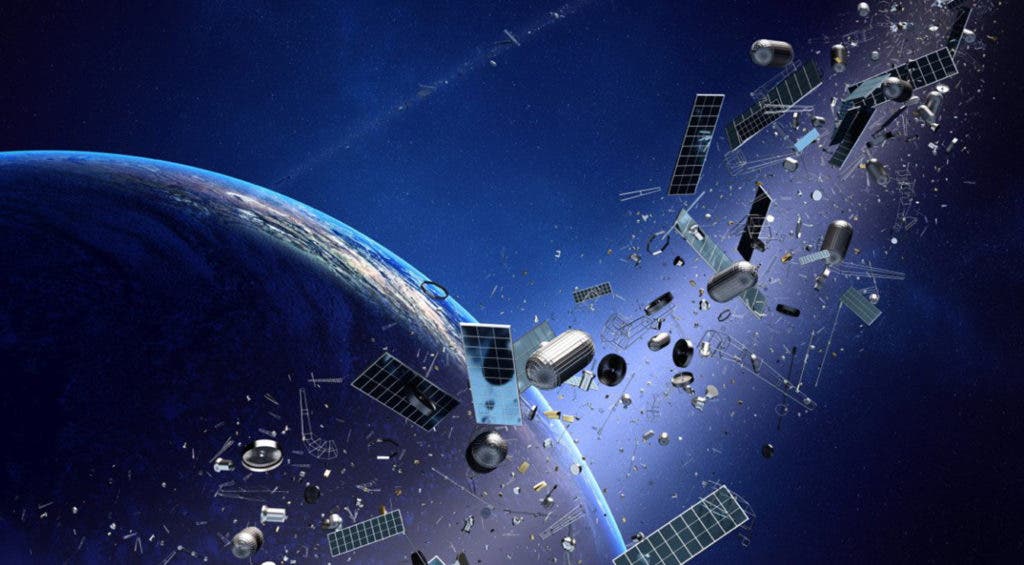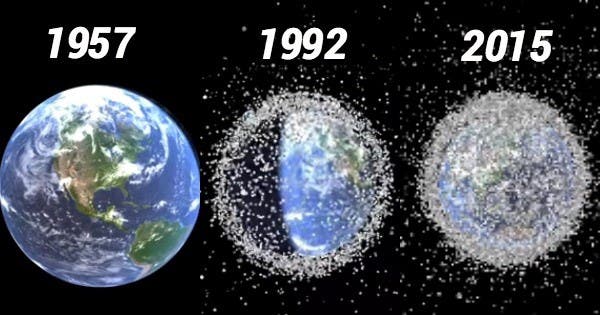
It’s no secret that humans have made a mess out of our planet — literally. The most plastic-riddled place on Earth, for instance, is an island in the middle of the freaking Pacific Ocean. Meanwhile, our litter problem has grown to cosmic proportions. NASA estimates that there are millions of fragments of man-made debris zipping in Earth’s orbit at more than 17,500 mph. At such velocities, even a tiny piece of junk like a nut or bolt can wreak havoc on our satellite infrastructure as well as threaten the lives of astronauts.
Since we began sending satellites into space in the late 1950s, we’ve been leaving behind trash with every launch. Every major power has contributed to this growing space junk problem, with China chiefly amongst them most recently. In 2007, some Chinese general had the bright idea to actually test an anti-satellite missile in the field — that is, in Earth’s low-orbit. When China used this test to destroy their own Fengyun-1C weather satellite, the event was one of the worst single contributors to orbital debris, creating some 3,300 fragments. But at least China is trying to make amends.
Scientists at the Air Force Engineering University in China completed a computer simulation that found it feasible to blast orbiting junk with space-based lasers. This kind of solution was first suggested in 2014 when the space junk crisis was becoming more evident. The present simulation confirms this concept can work by calculating how long they would have to target debris and the best angles to do so.
According to the team’s calculations, a space laser would have to emit 20 bursts of light/second for two minutes to destroy debris up to 10 cm in length. Larger debris can also be broken down into more manageable bits or deflected so the new trajectory sends the junk crashing down Earth’s upper atmosphere.

Quan Wen and colleagues at the Air Force Engineering University wrote that a “laser station with the same inclination and RAAN as debris has the highest removal efficiency”, and concluded space debris removal by using a space-based laser is theoretically feasible.
Not everyone is happy about the prospect of having a giant laser system deployed in space, however. Gen. John Hyten, the head of US Strategic Command, warned in March last year that the Chinese are “building weapons to operate from the earth in space, jamming weapons, laser weapons” and they’re developing “those capabilities to challenge the United States of America.” The general concluded that “WE cannot allow that to happen.”
Indeed, a laser weapon in space, even if deployed as a janitor, wont be taken well by the rest of the international community. Luckily, there are other groups working on other ideas. RemoveDebris, a project based at the University of Surrey’s Surrey Space Centre and funded by the European Union, wants to remove debris with instruments akin to a fishing net and harpoon. The European Space Agency (ESA) is toying with using magnets for the same purpose.


